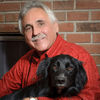Techniques for finding subjects using long telephotos?
May 12, 2019 08:16:43 #
Mike Holmes
Loc: The Villages Fl
billnikon wrote:
This is what you have to have, and it's made by Nikon
https://www.digitaltrends.com/photography/nikon-nikkor-500mm-phase-fresnel-dot-sight-laser/
and here is where you can buy it
https://www.bhphotovideo.com/c/product/1431882-REG/nikon_25953_df_m1_dot_sight.html
https://www.digitaltrends.com/photography/nikon-nikkor-500mm-phase-fresnel-dot-sight-laser/
and here is where you can buy it
https://www.bhphotovideo.com/c/product/1431882-REG/nikon_25953_df_m1_dot_sight.html
This is very nice. I wonder if it would fit on a non Nikon hot shoe. As a side note the dot only appears in the viewing device I do not think it actually projects a dot onto the target. The device is used commonly on handguns and AR type rifles as a sighting device, it eliminates the need to align front and rear open sights.
May 12, 2019 08:25:54 #
Mike Holmes
Loc: The Villages Fl
Floyd wrote:
Like your pictures. Recommend an inexpensive red dot gunsight (about $35.00). After adjusting for parallex(sight sits in hot shoe)this takes your face from behind the camera whereby you do not lose sight of your object/critter. Works great for BIF and will fix your problem.
What red dot did you buy for $35 and how did you mount it to your hotshoe?
May 12, 2019 08:31:37 #
First, it takes a TON of practice - can't get around it. Like others have said, if you're hand-holding, stare at the subject and, without moving your head / eye, bring the camera to your eye 95 times out of 100, you'll see the animal in the frame. There are a lot of things that can help (as mentioned) like sites, putting the screw/ tab at the top of the lens and that sort of thing. But the truth is, the best thing you can do is practice and get to the point you don't need the training wheels - the extra step they take is often too slow in a fast paced situation. (like a bird wizzing by)
Also, make sure you are focused at a distance that's approximately the same as the subject - if you're lens if focused really close and the subject is distant, it will be so out of focus that you won't see it.
Also, make sure you are focused at a distance that's approximately the same as the subject - if you're lens if focused really close and the subject is distant, it will be so out of focus that you won't see it.
May 12, 2019 08:37:07 #
SeaBrat
Loc: St Petersburg, FL
Just to follow up, I took the pictures in Cades Cove in the Smoky Mountains. About 8 other photographers showed up and the rangers kept us about 50 yards from the bears(maybe 30?). There was not much room to setup my tripod because of all the trees and other tripods in the way. After reading the replies, this is the dot sight I purchased to use as my training wheels until I get more practice! Many others do not come with a hot shoe mount.
https://smile.amazon.com/gp/product/B01N4CCR7X/ref=ppx_yo_dt_b_asin_title_o00_s00?ie=UTF8&psc=1
https://smile.amazon.com/gp/product/B01N4CCR7X/ref=ppx_yo_dt_b_asin_title_o00_s00?ie=UTF8&psc=1
May 12, 2019 08:41:03 #
Bonnie Halsell wrote:
Learned this tip from a pro wildlife and bird spotter: keep your eyes on the subject and bring your camera up to your eye. Took a little practice not to cheat and look for the camera.
Also, make sure it is your dominant eye that you put to the view finder. I am left eye dominant and usually I will find my subject immediately when I raise the camera to my eye. Keep both eyes open, too.
Google how to determine which eye is dominant if you are not sure.
May 12, 2019 09:04:36 #
Practice makes perfect.... the same scenario applies when shooting really small subjects when doing macro. That said, it does become easier with practice.
May 12, 2019 09:18:50 #
For me it was just a matter of getting used to using the long lens. I will say that I do a lot of birds in flight and it is easy to miss a bird even when you are correctly aimed because of the focus hunting. I will often try to focus on something at about the same distance away from where I expect to try and start tracking a bird.
May 12, 2019 09:36:23 #
May 12, 2019 10:12:06 #
just practice , eye ball the lens in the vertical horizontal just like shooting a rifle , then pan up and down a little , you will find your subject .
May 12, 2019 10:17:02 #
Gatorcoach, You have to point the laser at the aircraft, particularly at the cockpit. If you do that you're stupid and deserve what you get. Beware of your surroundings. If you're shooting birds in trees, the chances of also pointing at an airplane are very, very small unless you're near an airport.
May 12, 2019 10:47:22 #
Actually, according to Herrero's book about bear attacks, there is a big difference between black bears and grizzlies as far as the mother bear's defense mechanisms go. Moma Griz is very dangerous but not so the black bear mother. Her typical defense is to send baby up a tree and she seldom or never attacks a human in defense of her young.
By the way, Herrero also claims that black bears very seldom attack humans, but if they do, they want to eat us. Grizzlies don't want to eat us but will defend their food and young. For that reason, if attacked by a griz we should play dead, if attacked by a black we should fight like hell.
By the way, Herrero also claims that black bears very seldom attack humans, but if they do, they want to eat us. Grizzlies don't want to eat us but will defend their food and young. For that reason, if attacked by a griz we should play dead, if attacked by a black we should fight like hell.
May 12, 2019 10:57:24 #
ggab
Loc: ?
Screamin Scott wrote:
Practice makes perfect.... the same scenario applies when shooting really small subjects when doing macro. That said, it does become easier with practice.
Perfect Practice makes perfect.
Practicing incorrectly makes frustration.
May 12, 2019 11:03:02 #
Dave H2 wrote:
Consider a green laser rather than red. It can be seen more easily and further away.
D
D
Keep in mind - A Red Dot sight is not a laser sight. The Red Dot sight is typically a short scope (that may or may not have magnification) with an aiming point (red dot) mounted internally in the scope. For a weapons application, the 'Dot' can be adjusted vertically and horizontally so that the bullet hits at what ever the dot is held on at a known distance.
For a camera application it I wouldn't expect to have to adjust it much, if any. But maybe someone ho has used one on very long range lenses (500 to 600mm) can chime in on this.
May 12, 2019 11:33:35 #
bamfordr
Loc: Campbell CA
Non-technical suggestion. When I see a subject (bird) in a cluttered background I try to spot a distinctive feature - tree trunk with branch, burl, opening in leaves, etc. - and note its relation to subject.
May 12, 2019 11:57:51 #
Being old school I've learned to keep both eyes open for sighting. It has worked well for me shooting sports, especially football.
If you want to reply, then register here. Registration is free and your account is created instantly, so you can post right away.





